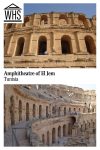Amphitheatre of El Jem
By Elliott Farmer
What is the Amphitheatre of El Jem?
The Amphitheatre of El Jem is a huge Roman-era amphitheatre which, in its day, held up to 35,000 spectators.
When we think of the Roman Empire, we have a geographical impression of Europe. However, the Roman Empire also extended into North Africa and the Middle East. Modern-day Tunisia is only 1,400km (870mi) from Rome and about 400km (250mi) across the Mediterranean Sea from Sicily.
Disclosure: This article contains affiliate links. Making a purchase through an affiliate link will mean a small commission for this website. This will not affect your price.
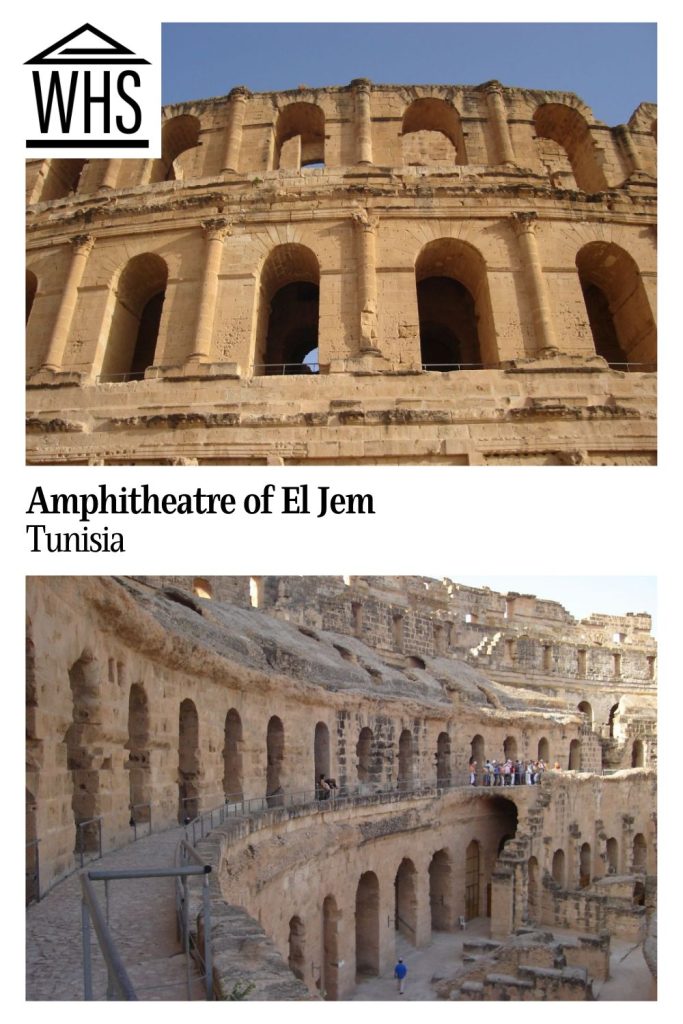
The Tunisian city of El-Djem, located 40km (29mi) inland from the coast, contains, at its centre, the ruins of the largest Ancient Roman colosseum in North Africa. Built in around 238 AD in Thysdrus (a Roman colony near present-day El Djem), it was used for gladiator events, live beast shows, executions and beast hunts.
The amphitheatre measures 148 metres (486ft) by 122 metres (400ft). Its facade comprises three levels of stone-block arcades of Corinthian or composite style. It is exceptionally well preserved.
In the Middle Ages, it served as a fortress, and the population sought shelter here during the attacks of Vandals in 430 and Arabs in 647. In 1695, during the Revolutions of Tunis, Mohamed Bey El Mouradi opened one of the walls to stop the followers of his brother, Ali Bey al-Muradi, who gathered inside the amphitheatre.
It is believed that the amphitheatre was used for saltpetre (gunpowder) manufacture in the 18th-19th century. In the second half of the 19th century, the structure was used for shops, dwellings, and grain storage.
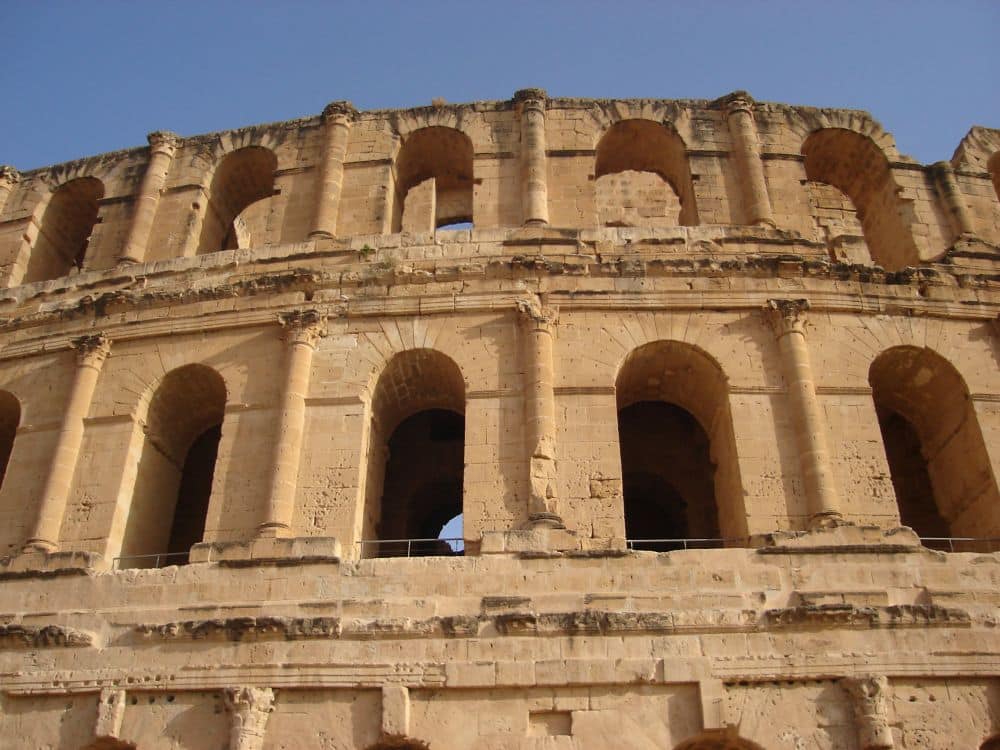
Why is the Amphitheatre of El Jem a UNESCO World Heritage site?
“This 3rd-century monument illustrates the grandeur and extent of Imperial Rome,” UNESCO’s website states. The amphitheatre is significant because unlike most Roman amphitheatres it is not built into a hill. It stands on flat ground, supported by arches. UNESCO describes it as an example of Roman amphitheatre architecture “almost equal to that of the Coliseum [sic] in Rome.” It adds that “The construction in a far-off province of a sophisticated and complex building, designed for popular spectacles, is characteristic of imperial Roman propaganda.”
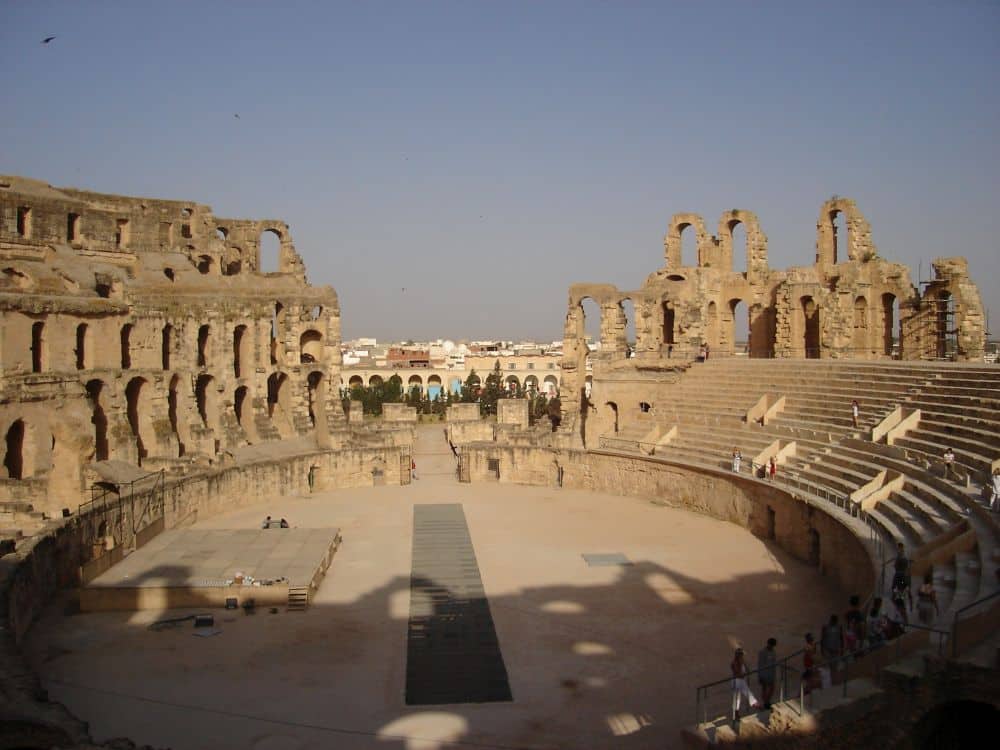
What can you expect on a visit to El Jem Amphitheatre?
The amphitheatre is not different in construction to any others in Europe such as the one in Tarragona, Spain, or the Colosseum in Rome. But what stands out about this Roman ruin is the exceptional state of preservation and substantial amount of the structure remaining. Almost all of the amphitheatre is open to the public, including the gallery tunnels beneath the arena, plus the bleachers and passageways between the inner and outer walls.
Unique to this amphitheatre is that it is still the tallest building in the city in which it resides. Outside of the amphitheatre, El Djem consists of one- or two-story residential properties. From the amphitheatre you get views over Djem and out into the desert beyond. You can also see the principal Roman road leaving the city in a perfect straight line.
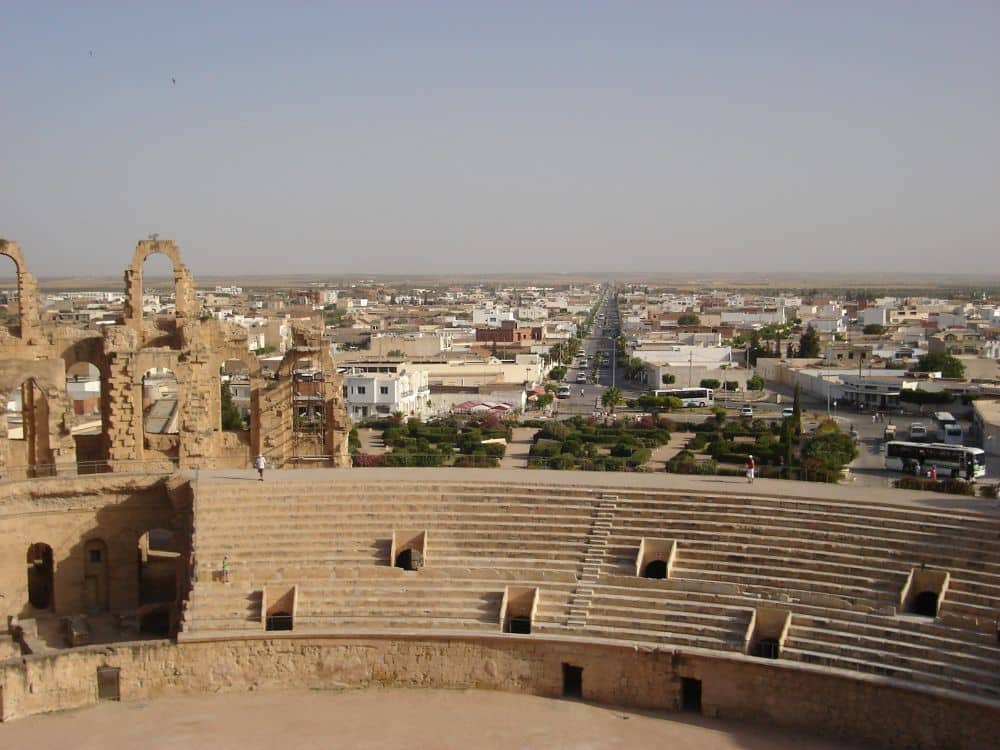
Tips for Visiting the Roman Amphitheatre of El Jem
I visited Tunisia on a week-long package holiday from Barcelona, taking a two-hour flight to Tunis-Carthage International Airport across the Mediterranean with airport transfer to the hotel and buffet food included.
The holiday stay was in a coastal resort in a typical enclave of hotels catering for westerners. After a day of hanging around at the hotel pool I soon got itchy feet and an urge to explore.
There are plenty of ways to see the sights in Tunisia if you don’t want to hang out at a pool. Click on the images below to see a range of multi-day tours.
Tunisia is not really a country where tourists roam freely outside of the hotel enclaves and beach resorts. Current government foreign office advice is to avoid certain areas near the borders with Libya and Algiers due to the risk of kidnapping or possible terrorist attacks. This is not to say that Tunisia is in any way unsafe or should be avoided, only that there are certain areas that it is not advised to go.
Note that Tunisia is primarily a Muslim country, with 98.2 percent of the people practicing Sunni Islam. Alcohol is legal to purchase and consume in Tunisia. However, outside the hotel complex enclave, I chose not to drink out of respect for the Muslim faith and also not to be stuck on a long coach journey in urgent need of a toilet.
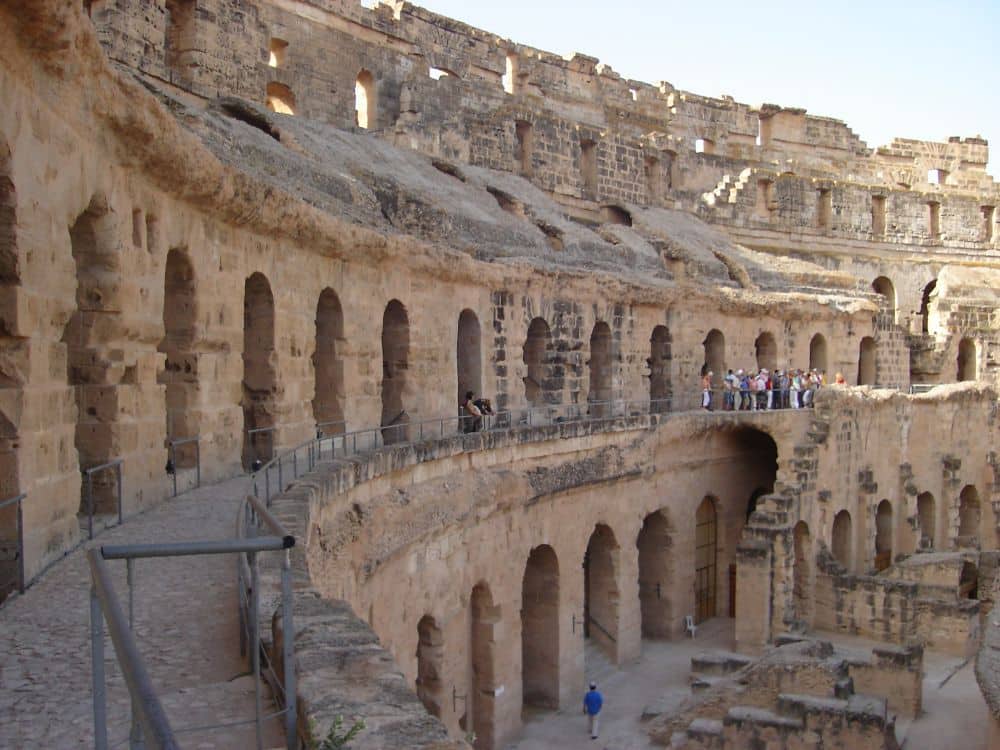
Where is the Amphitheatre of El Jem?
El Djem is about 200 kilometers straight south from the capital, Tunis.
By train: There is a limited railway network in Tunisia: Société Nationale des Chemins de Fer Tunisiens (SNCFT). El Djem has a station that links with the principal towns of Tunisia including the capital, Tunis. For the very adventurous traveller this might be an option.
By car: The drive will take about two and a half hours on the A1. Compare rental car prices from Tunis airport here.
By bus: In the reception of most tourist hotels, there are leaflets about very economical coach tours to the many attractions in Tunisia. You can book them through the hotel reception. I chose an all-included tour (coach, entry, lunch) to El Jem to visit the amphitheatre.
This tour from Tunis includes a stop in Monastir as well. This private half-day tour focuses solely on the amphitheatre, but leaves from the coastside city of Sousse. The Medina in Sousse is also a UNESCO site.
For more information about El Jem Amphitheatre, its opening hours and admission fees, see the Tunisia tourism webpage.
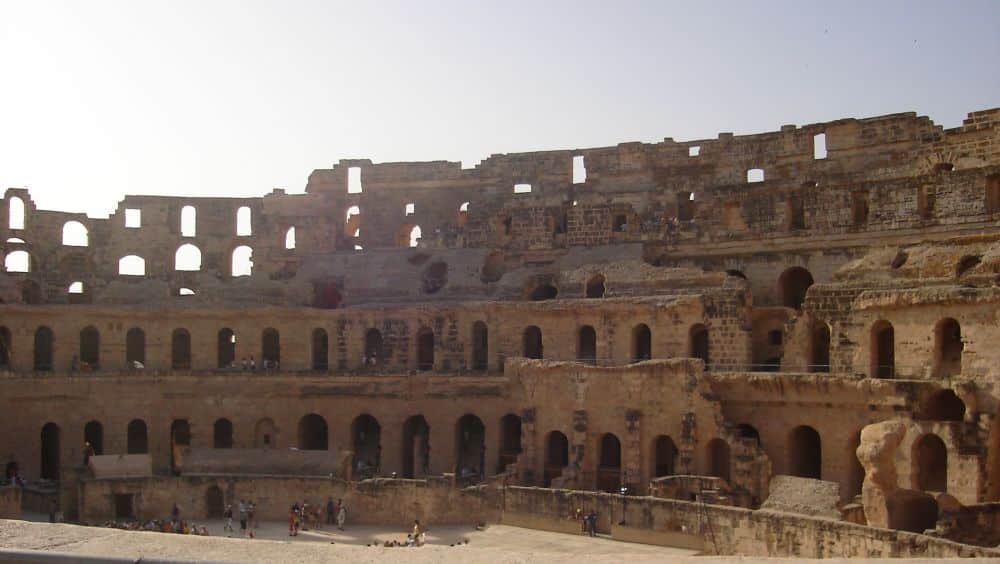
Have you been to El Djem? If so, do you have any additional information or advice about this UNESCO World Heritage site? Please add your comments below!

